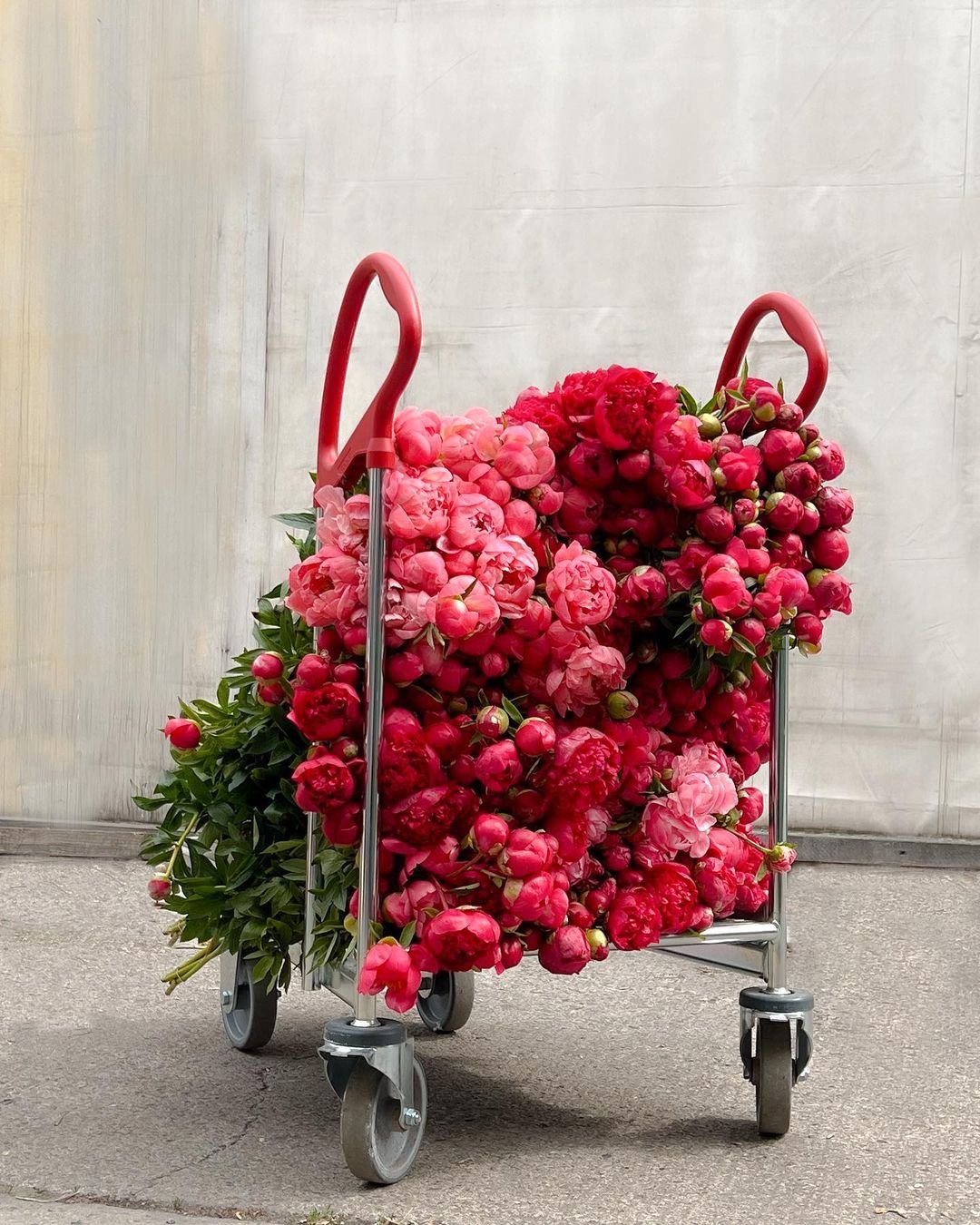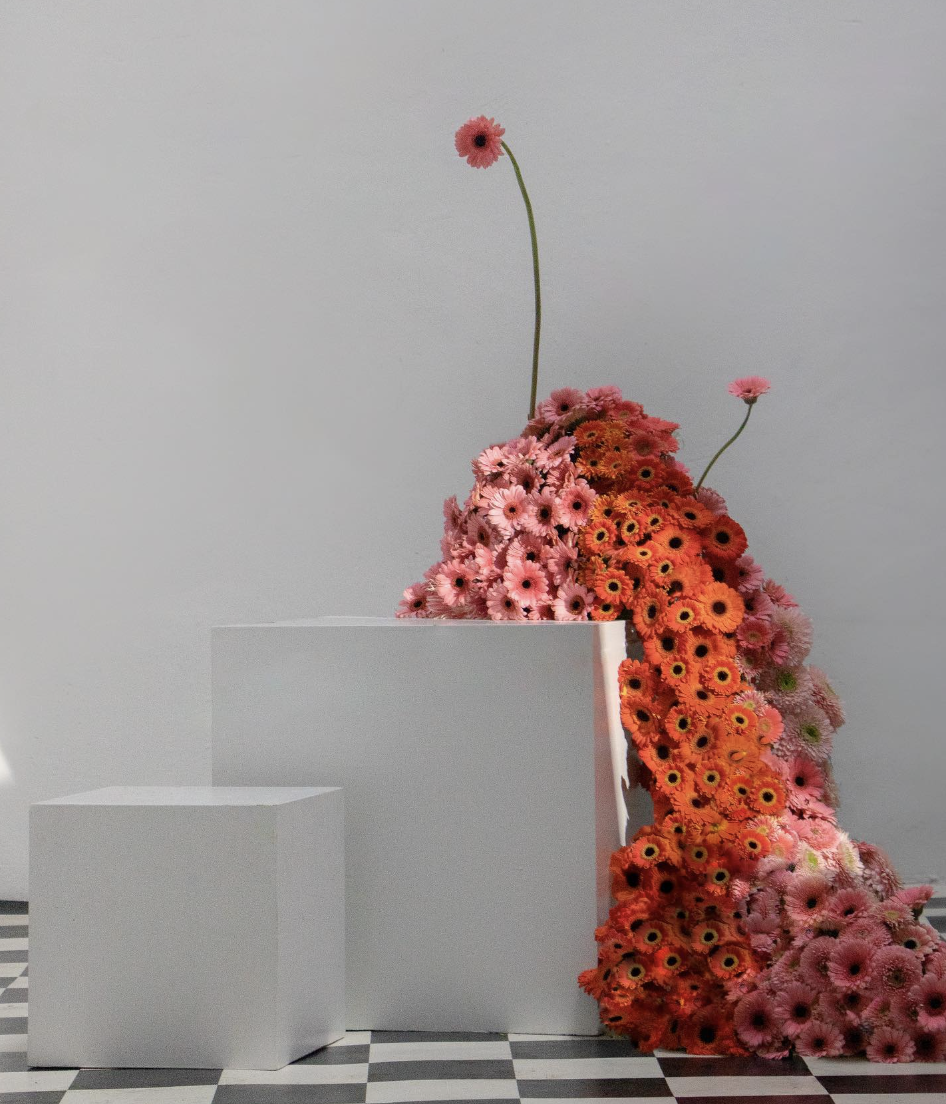Exploring the Duality Between the Urban and the Wild
I first saw Carolin Ruggaber’s work through an Instagram story of a friend of mine. I remember being mesmerized by this surrealist landscape of sand, grass, and purple flower details throughout, beautifully framed by three arched windows. I was immediately drawn by this peaceful visual so I reached out to Carolin to see if she could tell us more about her work and her life as a floral designer.
Grown up in the black forest and now based in Berlin, she is expressing all the influences of a big city combined with her deep love for nature into a unique style of flower arrangements and floral installations. Carolin explores the crossroads between the urban man-made environment and pure wildness.
“Botanical Utopia” recently featured on @designboom and @milan.design.week
Amor Díaz: Can you walk us through a typical day in your life?
Carolin Ruggaber: There is no day like a typical day. Some days I am on set for up to 15 hours, working non-stop. On other days, I spend time in the office conceptualizing and planning the next project with the team. It really depends on the specific project at hand, no day is the same.
Amor Díaz: How do you start your day?
CR: As my mornings are the most productive, I start my days very early, usually before anyone else is up and about. When I get up that I make sure to have some quiet time to myself with a good cup of coffee while not communicating to anyone but my cat. This helps me to mentally prepare for the day ahead and get into a positive and productive mindset.
AD: What does a usual day in the studio look like?
CR: This can be early morning visits at the flower markets, Preparing flowers and plants, supplying them with water, designing on Photoshop or 3D and communicating with clients or my team to make sure we are all on the same page.
AD: What are some of the challenges you face as a floral designer?
CR: One of my biggest challenges is finding a balance between being on production for long hours and keeping up with emails and communication. The practical part with the flowers and being available in the office all day long. During long production days, it can be difficult to stay on top of emails. Luckily I have a reliable team now who helps me to keep things running smoothly, even when I am not available.
AD: Can you share any specific rituals or practices you incorporate into your daily routine to enhance your creativity and inspiration?
CR: Generally speaking my mind is constantly inspired and I find inspiration all around me, whether it be a beautiful structure at the flower market or a walk in nature. Sometimes best ideas occur when I’m bored and I do nothing. There's a constant urge to create and turn my ideas into reality. I don't have any daily rituals or practices but I have found that quiet time is important to recharge. Whenever I can I’m away from my laptop or phone, also I implement small things like walking to the studio if I don’t need the car. It’s a 20 min walk through a small forest from where I live and super beautiful.
AD: How do you stay updated on the latest design trends and innovations in the industry?
CR: I aim for timeless designs that transcend trends. Trends are often short-lived and can quickly become outdated. Also, I think that trends can limit your creativity and can limit you to develop your own style. I love the new interpretation of flowers that some people may consider old-fashioned. When flowers are put in a completely new context, new design possibilities emerge. I believe that keeping an open mind and remaining curious are key to staying relevant and inspired.
AD: Can you give us an insight into the process of conceptualizing and creating a new installation?
CR: To me the most important is always the overall picture. So it always starts with understanding the space in which it will be located. How every single piece can be combined into a compositional entirety. How does it interact with the room? What needs to be expressed? How does it react to the architecture around it? Flowers have the enormous power to change the atmosphere in the room completely - so it’s very important to pay attention to the details. From there I start to digitally visualize the concept - compare structures, find the perfect flower or plant. This will also help the client to get a better understanding and we are all on the same page. The best part of course is the final production when everything comes together. The flowers are usually bought a few days earlier so they are at their best state and in full bloom. This is of course the most beautiful part, I love it when everything comes together, especially for big installations where there was a lot of planning involved and finally, the result comes to life.
Photo courtesy of the artist.
AD: What's been the most challenging project? Any particular one that comes to mind?
CR: I guess that every project comes with its own challenges, which makes it unique and exciting. It is important to approach each project with a fresh perspective and tailored approach since no two projects are ever the same. Sometimes, we have to come up with completely new techniques, that require extensive trial runs in the studio, or it can involve travel and logistical challenges. Especially this year we had quite a few projects overseas. But this is also what keeps it interesting. From the outside, it might look like I’m doing most of the work by myself but in reality, there is an amazing team of professionals supporting me like an engineer and very skilled florists. Without them nothing would be possible.
AD: Can you share any strategies or techniques for future flower designers out there?
CR: Taking time to create and explore new ideas is essential to me, creative time, where I’m just by myself and the flowers. This is why I’m spending a few hours once a week where I can work for a few hours alone in my studio where no one distracts me. Meanwhile, I have to mark it in my weekly calendar to make sure I’m really finding the time, but this is something very important to me as I’m able to find new techniques and also improve my photography skills. I have a very beautiful daylight studio - the light comes in a huge window from above with a 7m high ceiling - so it feels like you are completely cut out from the outside and can really focus.
AD: Curious to know your favorite restaurants, bars, and coffee shops in Berlin.
CR: Tough question, there is many! One of my most favorite is Kink Bar and Frank Café just next to it. I enjoy also good coffee at Coffee circle. What I can also recommend is the coffee place and restaurant at Königliche Gartenakademie in Dahlem, right next to the botanical gardens in a magical atmosphere in the green house.
AD: Your perfect day?
Surrounded by lots of flowers, that’s for sure.
Photo courtesy of the artist.





